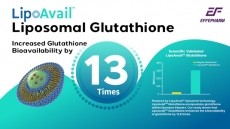Survey shows research gap over kids' cranberry use
(UTIs) leads almost one third of parents to give it to their
children, reports Jess Halliday, despite few pediatric
studies, according to research from Brenner Children's Hospital.
Cranberries have a long history of use in the prevention and alleviation of UTIs, and a body of scientific evidence suggests that its action is due to the fruit's polyphenols, which prevents disease-causing organisms from sticking to the walls of the tract, flushing them out of the body instead.
A Canadian study in 2002 found 40 per cent fewer women experienced urinary tract infections when receiving cranberry products compared to those on placebo, and also used less antibiotics.
But Brenner pediatrician Kathi Kemper is more cautious than some about the conclusions that can be drawn from these studies: "Several adult studies have had mixed results, but on the whole show that cranberry products are safe in preventing UTIs in adults," she said.
She draws attention to a dearth of pediatric studies to determine the efficacy of using cranberry products in healthy kids with recurrent UTIs.
"Research to address efficacy and safety issues is needed even more urgently than we originally thought."
For the new survey published in the July issue of Ambulatory Pediatrics, Brenner researchers carried out a survey amongst 115 patients aged between six months and 18 years, who were treated at the pediatric nephrology clinic.
They found that 74 percent of parents had heard of cranberry's purported therapeutic use, and 29 percent had given cranberry products to their children, whether to actually prevent or treat UTIs or for other given reasons, such as "to flush out the kidneys" .
The researchers also found that only 23 percent of parents who administered cranberry to their children reported having discussed it with a doctor.
This is yet another example of the growing trend towards use of complementary and alternative medicine (CAM) by children, as indicated in another Brenner Children's Hospital survey published in the Pediatric Annals in April.
In this instance, 45 percent of families surveyed reported giving their child a herbal product, and more than half of caregivers were unsure whether the herbal remedies interacted with other medications. Forty-five per cent reported discussing their use with the child's primary health care provider.
At this time, Kemper pointed out: "Children have their own unique physiology and metabolize, excrete and absorb supplements differently from adults. Even if a supplement has proven clinical efficacy and safety, the lack of standardization and regulation of supplements are obstacles in making recommendations."
Twelve percent of parents who reported using cranberry therapy said their doctor had actually recommended using cranberry, and there are no known scientific reports of interactions between cranberry and conventional medicines.
The remaining 88 percent of parents said they heard about cranberry from friends or the media. Although some parents did admit to using cranberry in lieu of standard therapy, none reported that it was because they were concerned about the side effects of conventional medicine or they had run out of antibiotics.
The Cranberry Institute draws attention to the possible benefits of the fruit for the urinary tract on its website, as does Ocean Spray, the leading producer of cranberry juice in the US which reported gross sales in the region of $1.4 billion in fiscal 2004.
Last year France became the first country to approve a health claim for the North American cranberry species vaccinium macrocarpon, which states that it can 'help reduce the adhesion of certain E.coli bacteria to the urinary tract walls'.
Initially the claim was only valid for products using the fruit concentrate or extract in powder form as it required daily consumption of 36mg, but in February of this year it was extended to juice drinks or cordials with a minimum of 27 percent cranberry, with 300ml consumed each day.













